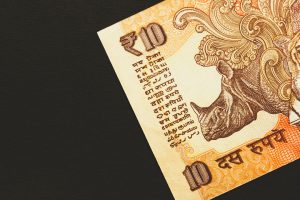Forex leverage is a tool that allows traders to trade with more money than they have in their account. It is a common practice in the forex market as it enables traders to increase their potential profits. Forex leverage is expressed as a ratio, such as 1:50, 1:100, or 1:500, indicating the amount of money a trader can borrow from the broker to trade in the market. The higher the leverage ratio, the more money a trader can borrow.
Forex leverage is a double-edged sword as it can significantly increase profits, but it can also increase losses. Therefore, traders need to understand the risks associated with leverage and use it wisely. In this article, we will explain what forex leverage is, how it works, and the risks involved.
Understanding Forex Leverage
Leverage is a financial tool that allows investors to borrow money to invest in an asset. In the forex market, leverage allows traders to control a larger position with a smaller amount of money. For instance, if a trader has $1,000 in their account and uses a leverage ratio of 1:100, they can control a position worth $100,000 in the forex market.
Forex brokers offer leverage to traders to attract more customers and increase trading volumes. They lend traders the money required to open a position in the market, and the trader pays interest on the borrowed amount. The interest rate on the borrowed amount varies depending on the broker and the leverage ratio used.
How Forex Leverage Works
Forex leverage works by using margin. Margin is the collateral required by the broker to cover the potential losses incurred by the trader. When a trader opens a position in the market, they need to put up a certain amount of margin, which is a percentage of the total position size. The broker calculates the required margin based on the leverage ratio used and the currency pair traded.
For instance, if a trader wants to control a position worth $100,000 with a leverage ratio of 1:100, they need to put up $1,000 as margin. If the leverage ratio is 1:50, the required margin would be $2,000. The higher the leverage ratio, the lower the margin requirement.
The margin requirement is essential because it limits the potential losses that a trader can incur. If the market moves against the trader, and their losses exceed the margin, the broker will close their position to prevent further losses. This is known as a margin call, and it can happen if the market moves quickly and unpredictably, leading to significant losses.
Risks Associated with Forex Leverage
Forex leverage can significantly increase profits, but it also increases the risks associated with trading. The higher the leverage ratio, the higher the potential profits, but also the potential losses. Therefore, traders need to be aware of the risks and use leverage wisely.
One of the risks associated with forex leverage is the potential for margin calls. If a trader uses a high leverage ratio and the market moves against them, their losses can exceed their margin, leading to a margin call. This can result in significant losses and can wipe out a trader’s account.
Another risk associated with forex leverage is the potential for overtrading. When traders use leverage, they may feel like they have more money to trade with than they actually have. This can lead to overtrading, where traders take unnecessary risks and open too many positions in the market. Overtrading can lead to significant losses and can be detrimental to a trader’s account.
Conclusion
Forex leverage is a powerful tool that can significantly increase profits, but it can also increase risks. Traders need to understand the risks associated with leverage and use it wisely. They should always use a leverage ratio that they are comfortable with and ensure that they have enough margin to cover potential losses. By using leverage carefully, traders can increase their potential profits and achieve their trading goals.





